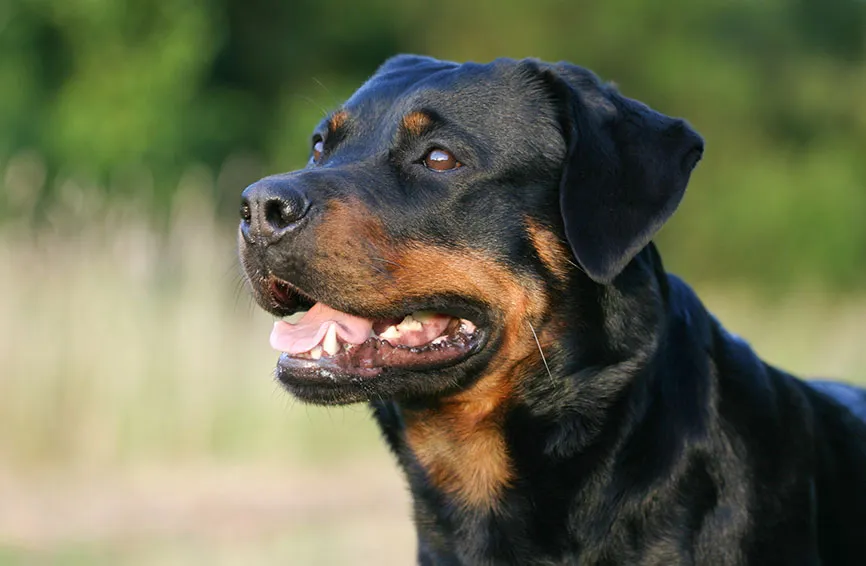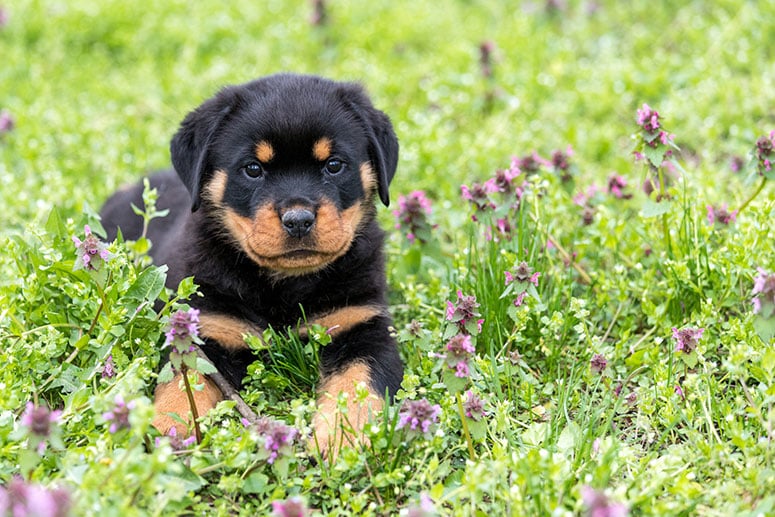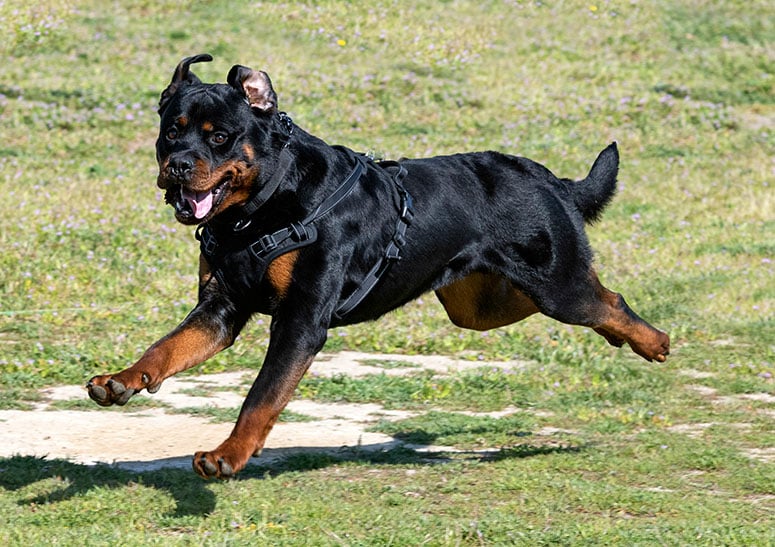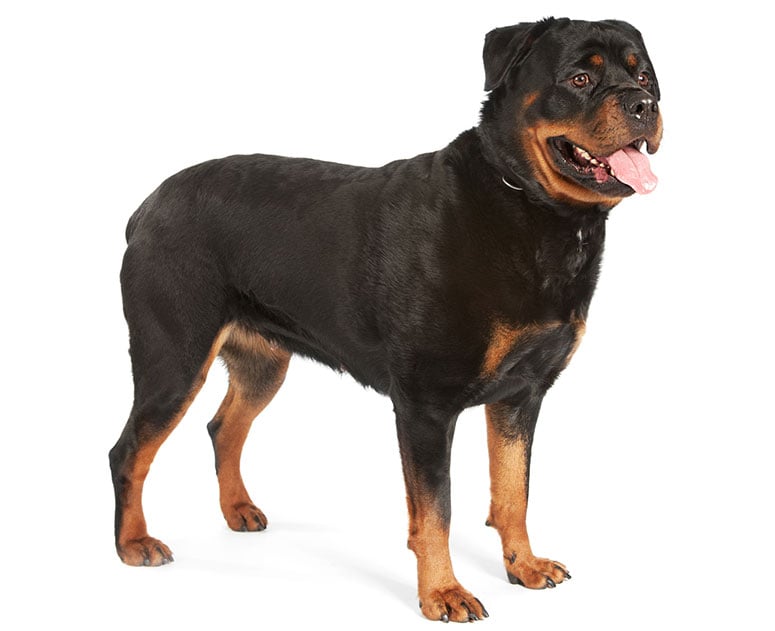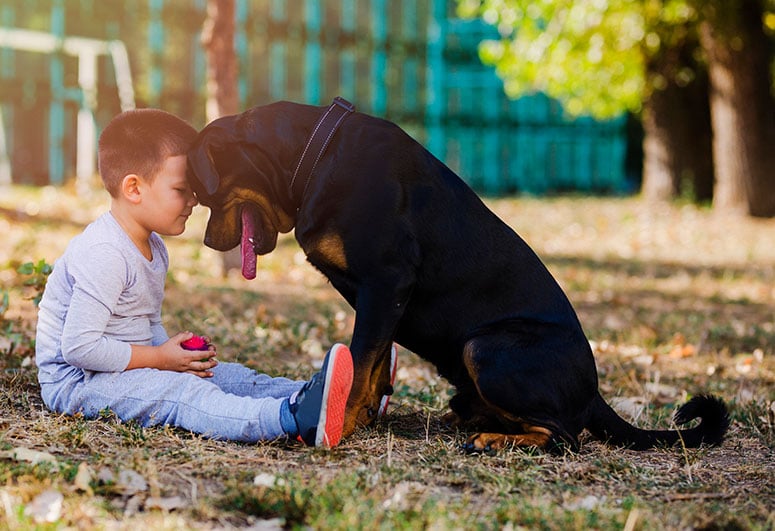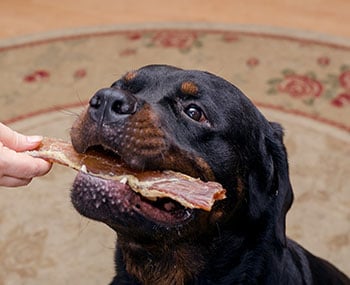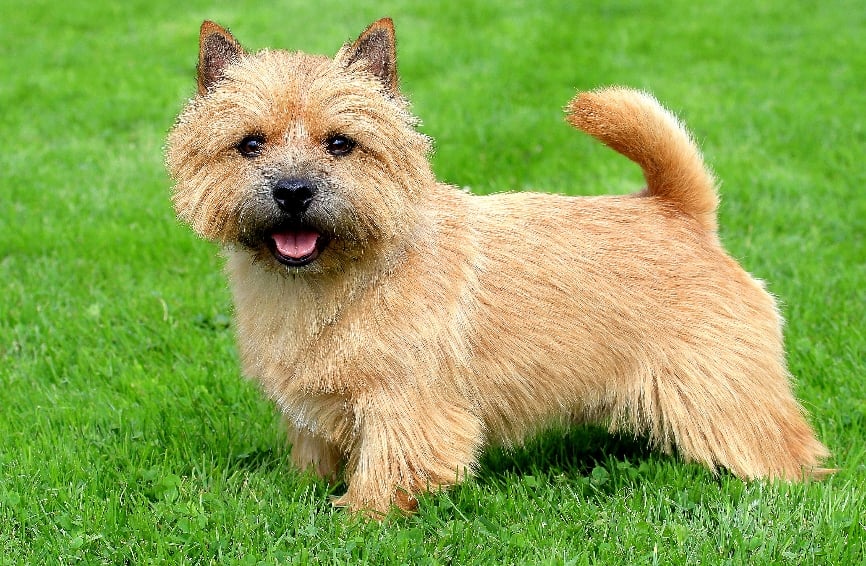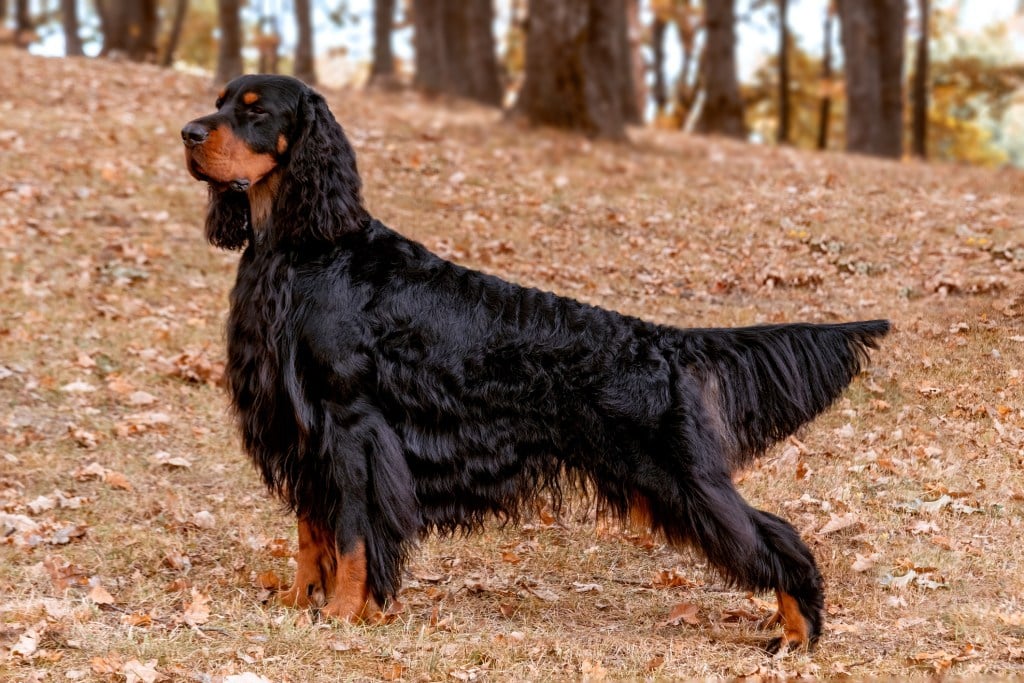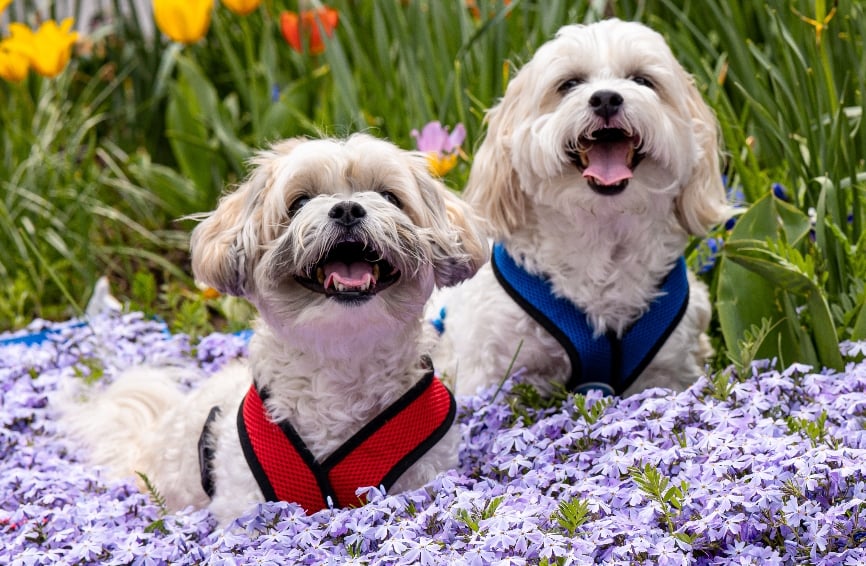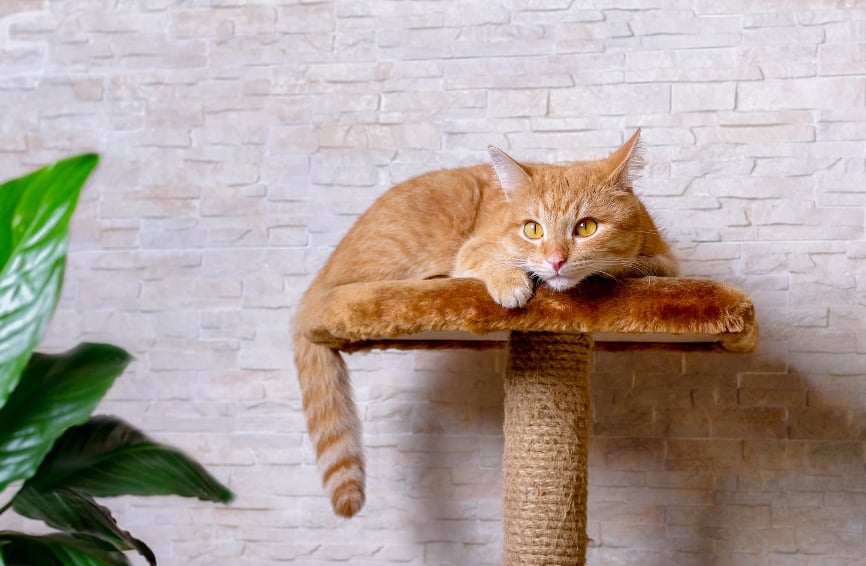Table of Contents
Introduction to Rottweilers
With a large size and loyal disposition, Rottweilers are wonderful companion dogs that are excellent at guarding and also loving household pets. These are strong, working breed dogs that are muscular and powerful. Although some people believe that Rottweilers are aggressive dogs, they are actually very trainable and can be gentle giants with the right human companions by their side. But to help your Rottweiler live a long and happy life, it’s a good idea to be aware of breed-specific health concerns and the best practices for taking care of this type of dog.
Size of Rottweilers
Rottweilers are large dogs that can weigh as much as a human adult when fully grown. Adult male Rottweilers typically weigh between 95 and 135 pounds, while standing 24 to 27 inches tall. Female Rottweilers weigh 80 to 100 pounds and are about 22 to 25 inches tall when they reach adulthood. Many Rottweilers continue growing until they reach two years of age.
Here’s how big you can expect your Rottweiler to get when fully grown.
| Weight Chart | 3 mo | 6 mo | 9 mo | 12 mo | 24 mo |
| Male Rottweilers | 40-45 lbs. | 66-77 lbs. | 86-98 lbs. | 95-110 lbs. | 100-130 lbs. |
| Female Rottweilers | 28-35 lbs. | 50-68 lbs. | 64-86 lbs. | 72-100 lbs. | 75-110 lbs. |
Characteristics of Rottweilers
Rottweilers are intelligent dogs that are loyal to the people they love. They are friendly with family members and even kids; however, they are not typically as friendly with other dogs, and they don’t like being left alone. Rottweilers do best in moderate temperatures that aren’t too hot or too cold, and they have high physical needs that require a good amount of exercise each day.
In general, Rottweilers are calm and confident dogs that are courageous and have a strong desire to protect their homes and families. They also have a strong desire to work hard and need a job to do to feel fulfilled and happy.
As you get to know a Rottweiler’s personality, here’s what you can expect based on his or her breed characteristics:
| Breed Characteristic | Level (High, Medium, Low) |
| Affectionate with People | High |
| Good with Kids | Medium |
| Good with Pets | Low |
| Need for Exercise | High |
| Energy Level | High |
| Intelligence Level | High |
| Able to Be Trained | High |
| Amount of Barking | High |
| Amount of Shedding | Moderate |
History of Rottweilers
Although Rottweilers are most closely associated with German culture, the breed can actually be tied to the ancient Roman Empire. The Romans bred distant ancestors of the Rottweiler from Asian mastiff-type dogs. These dogs were bred to be tough, sturdy, and excellent herders. The dogs made their way to Germany after conflicts with Germanic armies, ultimately to the cattle town of Rottweil, Germany, where the dogs found steady herding work to do. They were named after this town and worked with livestock until their jobs were replaced by railroad cattle cars in the 1800s.
Since then, Rottweilers have been used as police, military, and protective guard dogs in various settings. They also often find work as guide dogs for people who are blind and as search-and-rescue dogs following accidents and natural disasters. The American Kennel Club officially recognized the Rottweiler as a breed in 1931. Some dog lovers make a distinction between German Rottweilers and American Rottweilers, with the German version being slightly larger and blockier than the American-born dogs.
Rottweiler standard information
Rottweilers are among the most recognizable breeds of dogs because of their large size, muscular bodies, large heads, and black and tan markings. They have a larger frame and heavier bone density than many other dogs, and correct proportions are judged on these dogs in shows and competitions.
Here is an overview of the breed standard information for Rottweilers:
Head:
- Medium length, broad between ears
- Noble, self-assured, and alert expression
- Medium, almond-shaped eyes
- Medium, triangular-shaped ears
- Straight bridge muzzle, broad at base
- 42 teeth (20 upper and 22 lower)
Neck, Topline, Body:
- Powerful and muscular neck
- Firm and level back
- Roomy, broad, and deep chest
- Short, deep, and well-muscled loin
Forequarters:
- Long and well laid back shoulder blades
- Round and compact feet
- Thick and hard pads
- Short, strong, and black nails
- Dewclaws may be removed
Hindquarters:
- Long, broad, and well-muscled upper thighs
- Rear pasterns nearly perpendicular to ground
- Hind feet a bit longer than front feet
- Dewclaws must be removed
Coat:
- Straight, coarse, dense, medium-length outer coat
- Undercoat not showing through outer coat
- No trimming
Color:
- Black with rust or mahogany markings
- Gray, tan, or black undercoat
- Rust markings should not exceed 10 percent of body color
Gait:
- Trotting gait that is balanced and powerful
- Effortless and efficient motion
Caring for Rottweilers
Rottweilers are not the most adaptable dog breed in the world, but they can do well in various environments if properly socialized and cared for. They need plenty of exercise and a job to do, but this can be accomplished with a small yard and with daily walks, runs, or swims. Rottweilers can become destructive if they don’t get the level of activity they need on a regular basis.
Here are some general tips for taking the best care of a Rottweiler:
Best Living Environments:
- Apartments okay if taken out to exercise each day
- Some living environments may have breed restrictions that involve Rottweilers
- Best in homes with a yard
- Do well with children when they grow up with them
- May be able to live with other dogs and cats if raised with them from an early age
Type of Exercise:
- Daily walks or runs
- Running beside a bicycle
- Swimming in safe bodies of water
- Chasing after balls
- Running in the woods
- Not the best breed for off-leash dog parks
Mental Enrichment:
- Playing fetch with family members
- Rottweilers thrive on mental stimulation and learning new things
- Cuddle time with family members
Training Strategies:
- Pet parents must be very dedicated to training and socializing
- Fairly easy to housetrain
- Use positive reinforcement and stick to a consistent training schedule
Grooming Tips:
- Easy to groom a Rottweiler’s smooth and glossy coat
- Use a firm bristle brush occasionally
- Rubber hound mitts and soft bristle brushes also work well
- Only bathe when dirty, not excessively
- Average shedding compared to other breeds
- Trim nails every few weeks
Common health problems of Rottweilers
Rottweilers typically live for eight to 12 years, but you can give your dog the best life possible by being aware of potential health problems and addressing them early. If you purchase a Rottweiler from a breeder, ask if the parents have a clearance from the Canine Eye Registry Foundation, an OFA cardiac exam, and hip and elbow evaluations from the Orthopedic Foundation for Animals.
These are some of the most common health issues that arise with Rottweilers:
- Hip dysplasia
- Elbow dysplasia
- von Willebrand’s disease (blood clotting disorder)
- Aortic stenosis
- Gastric dilatation-volvulus (bloat)
- Osteosarcoma
- Hypothyroidism
- Panosteitis (growing pains in puppies)
- Allergies
Diet and nutrition for Rottweilers
Due to the large size of Rottweilers, these dogs need between four and six cups of dry dog food per day (depending on the caloric density of the diet). Divide this total amount of daily food into two meals for the morning and evening. Rottweilers are prone to overeating and weight gain, so monitor when and how much your dog is eating rather than leaving food out throughout the day.
Where to adopt or purchase Rottweilers
You will often find Rottweilers and Rottweiler mixes at animal shelters and that are in need of adoption. The American Rottweiler Club offers resources for finding a Rottweiler and information about local Rottweiler clubs. There are numerous rescue organizations dedicated to this breed of dog, including R.E.A.L. Rottweiler Rescue and Adopt a Rott.
If you prefer a purebred Rottweiler, check out the American Kennel Club Marketplace to look for a new puppy from an AKC-registered litter and breeders who follow responsible breeding rules and regulations. Responsible breeders are in good standing with the American Rottweiler Club and make sure their dogs are screened for genetic diseases.
Related breeds
If you love the idea of bringing a Rottweiler into your home, you might also be interested in other similar and related dog breeds that share characteristics with these dogs. Here are some examples to consider:
- Doberman pinscher
- Bullmastiff
- Beauceron
- Hovawart
- Greater Swiss mountain dog
- Great Dane
- Boxer
Pet insurance for Rottweilers
Pet insurance is important to have throughout all stages of your Rottweiler’s life so that you can be prepared for accidents and illnesses as they happen and that become more concerning with age. Healthy Paws offers Rottweiler pet insurance with no maximum annual or lifetime payouts, and most claims are processed within two days. With Healthy Paws by your side, you can worry less about how to pay for veterinary treatments for your Rottweiler’s breed-specific conditions, genetic conditions, and alternative care. Tell us a few details about your Rottweiler to see pet insurance rates today.
